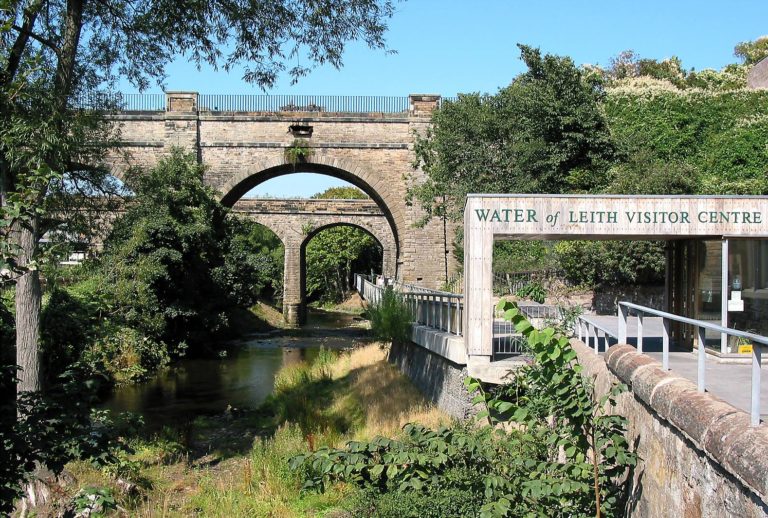Your have now arrived at slateford, the site of an ancient river crossing, with “slate” derived from the slate-like rock in the riverbanks. The steep gorge upstream and marshy flats downstream led the village to become an important transport hub. Bridges carry the Lanark Road, the Union Canal and the Caledonian Railway line across the river at this point. The main industries of the village were the bleaching green, printing work and quarrying at the Redhall and Hailes quarries to the west. In 1964 the road was widened losing much of the old village.
The old school house remains and is now home to the Water of Leith Visitor Centre. Open daily from 10.00am to 4.00pm. The Centre hosts a fantastic free interactive exhibition about the Water of Leith, a host of river & walkway information & serves light refreshments. Come on in. The Centre is also the headquarters of the Water of Leith Conservation Trust, a small charity who works with volunteers to conserve and enhance the river as a haven for wildlife and an educational and recreational resource for all. So if you fancy rolling up your sleeves and helping the river why not join us as a volunteer or support our work as a member.
Heading downstream of the centre on the new elevated walkway, you will notice the scene is dominated by the Slateford aqueduct built in 1822 and railway viaduct built in 1847. Access by steps has been created linking the walkway with The Union Canal. Here the cycling route rejoins the walkway to head downstream.
This section of walkway was only opened in 2002 and while it passes through industrial and retail areas, as well as the allotments and Saughton Prison, it teems with wildlife and wildflowers. Keep a watchful eye open for the Kingfisher with its distinctive plumage and loud shrill whistle call. The next Audio point is at the entrance to Saughton Park after you have crossed Gorgie Road.
–
Video created by Bryce Morrison, Edinburgh U3A Movie Makers Group



